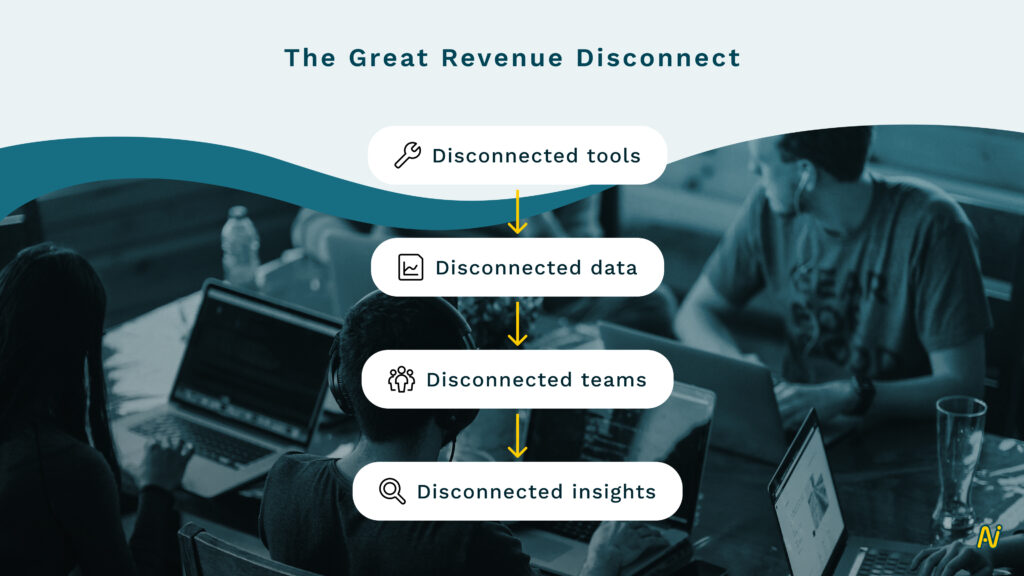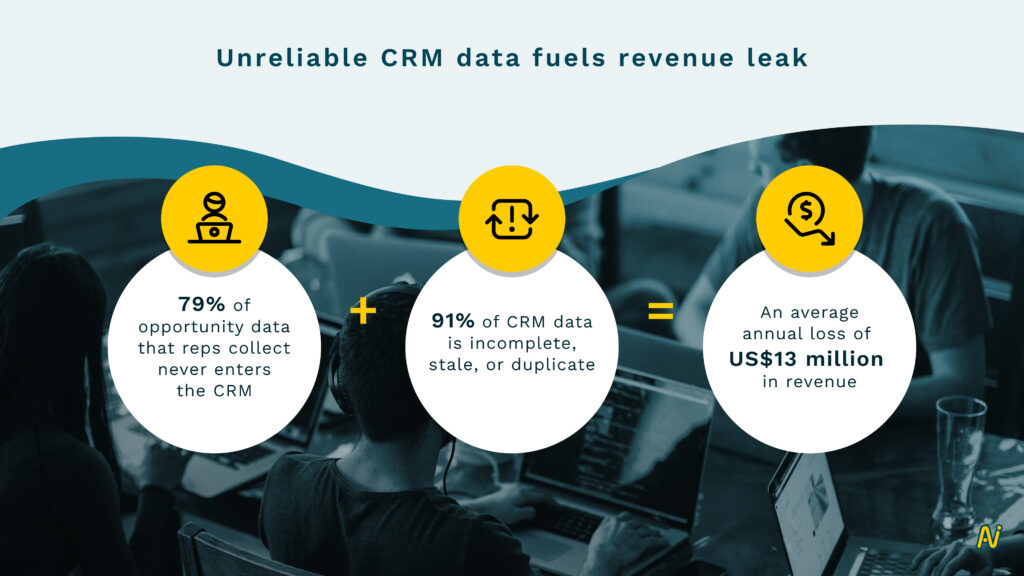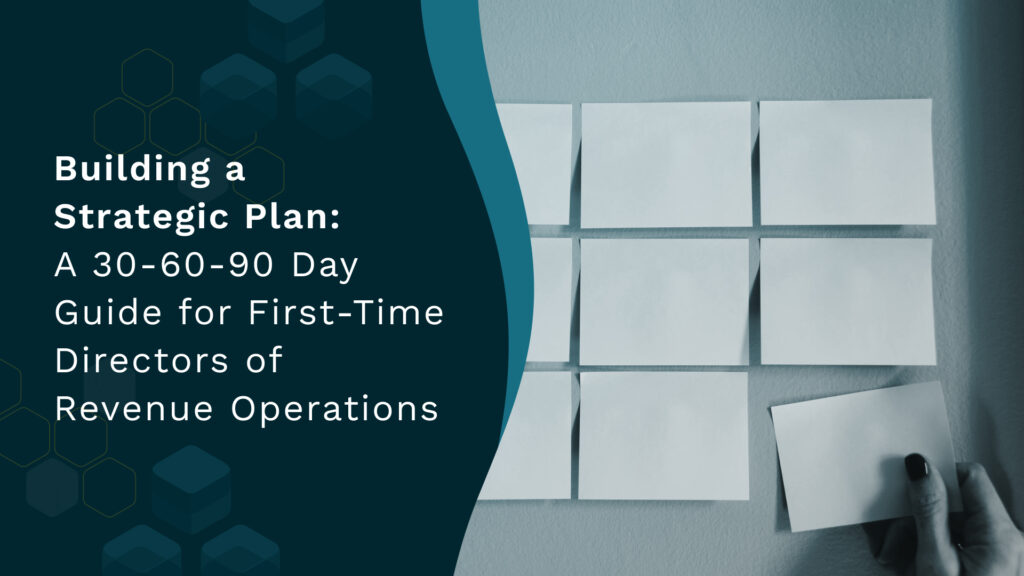Revenue leakage is real. And CRM data leakage is one of the leading culprits responsible for revenue leaks, fly-wheeling into multiple misses at different points before, during, and after a sales deal is closed.
It’s so damaging that companies lose as much as 10% of their annual revenue.
So, what can you do about it? Before we dive into that, let’s refresh what CRM Data leakage really means.
What is CRM Data Leakage?
CRM data leakage happens when low-quality or faulty sales data creeps its way into your systems – hampering productivity, forecasting, customer satisfaction and overall reliability of the CRM for the revenue teams. It’s simply bad CRM data quality costing you valuable time and money.
Reps missing out on high-potential opportunities to data leakage is more common than you think. If your CRM isn’t constantly checked for bad data and updated with new and enriched data – It’s just going to start working against you.
If your team doesn’t have a clear set of protocols for CRM data entry or it’s just low on the priority list – you’re probably losing a good chunk of revenue to it. According to a Gartner survey, companies lose an average of $14.2 million to data leakage annually.
Outdated lead contact data wasting your team’s time / human error in form entries are a couple of common examples.
Building The Case Against CRM Data Leakage
You could follow in the footsteps of most organizations these days, i.e., hire more reps or deploy more sales tools.
But does it always work? Not really.
More tools and more employees don’t equal more revenue. On the contrary, it may worsen the CRM problem by scattering data across disconnected systems and disrupting the seamless exchange of quality data between teams.
“We haven’t really bought into the practical idea of having a single technology spine and a free-flowing amount of data, accessible to every business line leader, informing real-time daily decisions.”
BEn Stroup, President at Velocity Strategy Solutions
That’s when companies get introduced to the torchbearer of revenue leakage across the organization – THE GREAT REVENUE DISCONNECT as highlighted in the image below.

Below are 7 ways CRM data leakage cuts through your revenue funnel, leading to The Great Revenue Disconnect.
1. Key Revenue Data Goes Missing From Your CRM
Data lies at the heart of your business operations. It sheds visibility on where you can make improvements, drives focus on leading indicators, and helps fix the revenue funnel before it breaks.
And that’s why the most significant pain point for most organizations is the unreliable data in core systems like the CRM.
79% of the opportunity data collected by reps never sets foot into the CRM. This is because a lot of data in the CRM is done through manual entry. And reps don’t have the time to input all the data into the system.
Worse – the data that does make its way into the CRM may be dirty (inaccurate, incomplete, non-compliant, or outdated). Each year, 91% of CRM data is incomplete, stale, or duplicate. And 70% of this data decays annually.
It makes dirty data a key offender, hurting organizations with an average annual loss of US$13 million in revenue!

CRM is one of the most significant investments for sales organizations. But when its data quality is so dubious, you can’t harness the true power and handsome ROIs that CRMs promise.
Over time, CRM becomes a major source of revenue drain with very little value added to your business goals.
2. CRM Data Insights are Unreliable
KPIs alone can’t help you develop accurate sales forecasts. You also need historical CRM data. This means you’ll look beyond win rates and into audience segments, lead personas, deal size, conversion rates, sales volume, and time to close deals.
That’s an extensive list.
But 44% of enterprises can’t access these details because they cannot perform advanced customer analytics with CRM data.
Revenue leaders are losing trust in the CRM. Nearly 70% are not confident of their CRM data’s accuracy.
And there are good reasons behind this loss of faith.
For starters, business decisions made with insights from bad data are risky. Poor quality data equals more flawed insights in critical areas like marketing campaigns, sales and marketing collaboration, or pipeline overview.
Leaders need reps to update their CRM tasks to have better visibility of sales deals. But, as we pointed out before, reps barely find the time or don’t enter this data into the CRM.
Without automated activity data tracking, chances are you’ll never find the insights you’re looking for to make sound revenue decisions.
You won’t get answers to key sales activity questions either. Questions such as:
As leaders, there’s a lot more you can do. But most take little action. Only 20% of leaders consider upholding CRM data quality a critical priority.
Poor CRM hygiene strips organizations of nearly US$13 million annually. And not just money; 25% of reps feel that maintaining CRM data frequently takes time away from selling.
Every minute a seller spends navigating the CRM system is time wasted on non-critical, non-revenue activities.
Unfortunately, CRM data leakage continues raiding the revenue funnel.
3. GTM Teams Face Misaligned Tech Stacks and Goals
Sales and marketing have historically faced alignment issues. Both teams work closely together, pushing leads through the sales funnel.
Naturally, data between both teams needs to flow smoothly. But CRM data leakage compromises data quality. Add to that disintegrated tech stacks, and the gap between sales and marketing gets wider than before.
Marketing professionals are barely confident about sales CRM data, so much so that they’re 160% more likely than the sales teams to rate sales forecasts and reports as inaccurate.
Clean data is vital for running campaigns.
Marketers strive to send relevant messages to the right audience at the right time. Targeted and relevant campaigns are critical for nurturing prospects and building strong customer relationships.
To do this correctly, they need quality intelligence on buyers derived from CRM data in the form of an Ideal Customer Profile (ICP). High-quality buyer data gives both sales and marketing teams ample visibility into the ICP. It also helps influence the buying group at an account level.
But if the system is plagued with inaccuracies and insufficient data, your teams build the ICP on an unstable foundation. Marketing and sales teams end up reaching out to the wrong buyers.
Then there’s the matter of lead scoring, where marketing and sales determine which prospects need more attention.
However, lead scoring also relies on accurate and complete contact data. CRM data leakage makes lead scoring a challenge.
Sales reps may receive a lead from marketing but not approach the deal properly owing to poor lead scoring data. What’s more damaging is that a potential high-margin customer may receive a lower score, diverting the sales team’s attention away from the lead.
4. Sales Pipeline Gets Bloated With Unpromising Leads
As per McKinsey, companies, where sales managers spend half their time coaching, are 1.4 times more likely to outperform competitors, and deal reviews set the stage for coaching sales reps.
They help sales managers:
Primarily, deal reviews develop the groundwork for winning sales strategies. But unfortunately, most reviews end with managers interrogating reps and not offering constructive support.
Why?
Managers don’t have enough real-time information about a deal when data sits in silos or is inadequate. They also don’t know if reps are geared more toward high-impact activities. As a result, they lack foresight and can’t coach reps effectively.
CRM data leakage restricts managers from effectively coaching reps and limits 27% of reps from attaining their quota.
Delayed insights and incomplete data render a manager’s feedback unusable and unclear.
With no insights or predictions, sales managers turn to lagging indicators – like conversion rate, win rate, LTV, quota attainment, and pipeline coverage – to track sales performance.
These indicators are old-school, relying solely on past data. They also miss granular information on the sales process, from tools to multiple buyer communication channels.
Lagging indicators offer:
Conclusively, to coach reps of the future, lagging indicators are grossly insufficient. It doesn’t help sellers because they miss out on valuable inputs to convert a cold lead into a winning opportunity. And it’s all but a product of CRM data leakage.
With the lack of effective coaching, 75% of reps find it challenging to identify the most valuable opportunities in the pipeline. Another 54% of prospecting teams cannot access actionable intelligence in real time.
CRM data leakage gives reps and managers no clear answers to key pipeline visibility questions:
Unreliable and inaccurate CRM data disrupts the GTM funnel. Reps and managers manually refer to multiple data-driven reports and stray away from shared revenue goals.
As managers grapple with discovering answers, unpromising leads pile on within the pipeline. And while reps may think a more extensive pipeline means more revenue, it’s quite the opposite. They waste precious time away from generating predictable revenue.
5. Missing Buyer Contact Data Translates to Missed Opportunities
Gone are the days when an individual B2B seller and buyer carried a sales deal to closure. Today’s B2B buyer isn’t an individual but a buying group – a committee of key stakeholders across the buying organization.
Take technology-buying decisions. The general assumption is that IT will be helming the process. But IT has taken a backseat, with over 56% of decision-makers now in other roles like business development, marketing, and finance.
Consequently, the buying process is longer now. Sellers continually engage with each stakeholder throughout the cycle, nurturing the relationship with the committee.
It’s hard to imagine how successful the multithreading process will be without reliable contact data.
Sellers can’t accurately validate the stakeholders in the group and, therefore, can’t have personalized interactions with each of them.
40% of businesses are unable to use CRM data to drive personalization in sales deals.
Moreover, the modern sales funnel needs reps to engage with buyers even after a deal is won. Sellers periodically scout for potential upselling and cross-selling opportunities.
CRM data leakage leaves reps scrambling to segregate profitable from unfeasible opportunities. Nor can they easily identify key stakeholders.
Ultimately, missed buyer contact data results in missed opportunities.
6. Rep Productivity is Compromised
Sales professionals spend long hours at work. Out of these extended hours, they allocate 17% of their time to entering data in the CRM.
Reps mind this, a lot!
81% of sellers say that reducing their time on administrative activities could be more profitable for their company.
Data errors can also keep vital information and feedback from reps. In fact, 47% of enterprises state they can’t consider CRM a single source of truth for customer data. Without these details, reps may underperform during a sales call or make very few improvements in their selling process.
Other times, reps find CRM systems too complicated. Not having an easy-to-use interface can have significant implications:
As a collective result, reps feel stuck in a rut, going through the motions of selling. This loss of confidence inevitably motivates them to start pursuing new job opportunities.
As much as 61% of CRM users would consider quitting their jobs if their companies didn’t do more to improve data quality.
Losing your employees eats away at your revenue, too.
7. You Risk Jeopardizing Customer Relationships
64% of businesses expect the #1 benefit of CRM data is an improved customer experience. Shockingly, that’s not the case.
Poor data quality in the CRM causes 56% of sales reps to lose existing customers while 51% lose new deals.
That’s a whole lot of revenue lost.
When it comes to “value,” buyers interpret it in multiple ways:
Buyers who have high-quality information at their disposal are 26% more likely to purchase your product. Gartner also found that customers who received value from suppliers that helped advance their buying jobs were 2.8 times more likely to experience better purchase ease. They’re also 3 times more likely to go for a bigger deal with less regret.
But if sellers have no idea about the buyers (for instance, which sales funnel stage are prospects at), marketing and sales campaigns go for a spray-and-pray approach. All buyers receive the same information (or value). And the sales organization hopes that some of these messages will land with the right buyers.
What’s worse than targeting the wrong buyers? Targeting the right buyers with irrelevant and repetitive information.
Consider using an incorrect name or designation when addressing a key stakeholder or sending duplicate emails to the prospect.
Unreliable Contact Data --> Spray-and-Pray Selling --> No Value for Buyers --> Lost Revenue
In the age of hyper-personalization, these aren’t minor errors. They can damage customer relationships for a lifetime, particularly when customers expect personalized purchase experiences.
CRM data leakage takes away the chance to understand buyer needs and give them the best-suited, customized solutions.
Let’s also not forget about data security.
84% of consumers can trust brands that prioritize using personal data with privacy in mind. As a result, most companies are adopting sound data security laws such as GDPR and CCPA.
If CRM data is non-compliant, you risk attracting steep financial fines and increased operational costs.
Then there’s the matter of your reputation, to which even tech giants are not immune. Amazon and WhatsApp paid hefty fines for alleged non-compliance with GDPR, ruining their perceived brand image.
These data security laws have revolutionized the importance of first-party data. Third-party data largely fuels AI-ML marketing and sales models. But compliance is pushing it out, so you need to start collecting first-party data directly from prospects.
If this first-party data is of poor quality right at the onset, i.e., in the CRM, you’re headed for substantial financial risk.
There goes value. And revenue.
It’s Time to Plug Your CRM Data Leaks
CRM data leakage wreaks havoc on your revenue flow and disrupts GTM execution with:
There’s an effective solution.
Nektar’s revenue operations platform automates the CRM input process. It starts solving data leakage problems from Day 1 of deployment, bringing in 156% more data through a historical scan.
The solution identifies gaps within the CRM system and fills in missing contact plus activity data. Revenue leaders can provide complete pipeline visibility to teams and managers across the sales funnel.
The platform equips you with powerful insights to drive predictable revenue, optimize the sales process, incorporate leading indicators in coaching, improve deal health, and speed up deal closure.
Improve your CRM data hygiene by plugging revenue leaks with Nektar.

PUBLISHED BY








